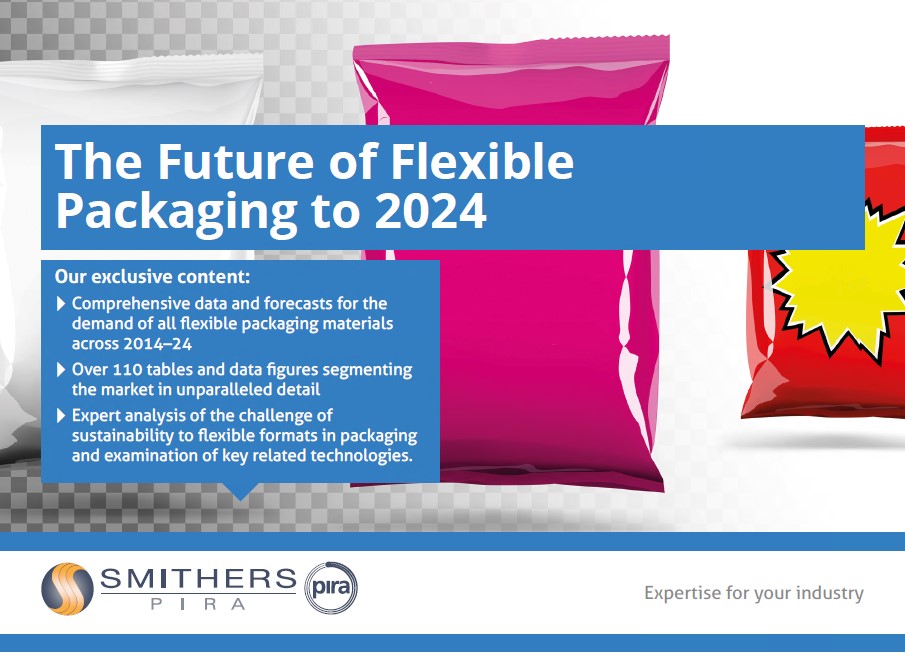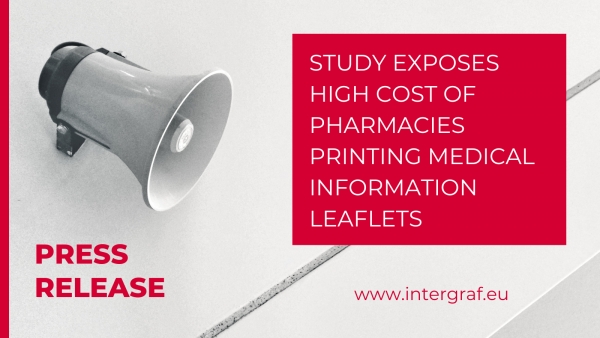June 2019

The future of flexible packaging to 2024 -Smithers Pira
Smithers Pira forecasts global packaging market to $269 billion by 2024.
Over the last 10 years, flexible packaging has taken off, doubling in size to $228 billion in 2019. In Smithers Pira's latest market report The Future of Flexible Packaging to 2024 forecasts that it will continue growing by an annual rate of 3.3%, reaching $269 billion in 2024.
Global urbanisation has increased the demand for flexible packaging along with e-commence and technological advancements in barrier protection, active packaging and digital printing. At the same time, sustainability is also a major concern for the market.
Flexible packaging is replacing more traditional packaging, such as glass jars and metal cans, more and more each year as its benefits are acknowledged. These benefits include extended shelf life, improved cost economics, lower pack weights and lower transport costs. Use of flexible packaging can minimise transport costs at all levels, thanks to the lower pack weight and the ability to compress the packaging into small transport volumes. Flexible packaging also allows improved cost economics due to requiring less energy and resources than other packaging types, which means that the cost of production per packaging unit is less.
The market report identifies the key drivers and trends for the flexible packaging industry including areas such as:
- Sustainability - is both a driver and a challenge for the packaging market as consumers cut down on the use of unsustainable packaging.
- E-commerce - Consumer demand in e-commerce is continuing to rise and is predicted to continue to increase through to 2024.
- Product protection - Manufacturers are finding the protection provided by flexible packaging a benefit, thus increasing the likelihood of using it.
- Supply chain efficiency - Flexible packaging allows manufacturers to increase efficiencies in manufacturing of products, including reduced transport costs and reduced waste.
- Digital printing-The benefits of digital printing for flexible packaging are widespread, including more economic short runs and an increased number of printable substrates.
- Economics - The economic cycle of a country has a major influence on consumer spending, which in turn affects the packaging market.
- Lifestyle and social influences - Busier and more demanding lifestyles are leading to growing demand in convenience products, particularly food items.
The Future of Flexible Packaging to 2024 analyses and quantifies the current and future market trends for all key materials, end-use applications, pack formats and national and regional geographic markets. The report explains and examines key market drivers and trends 2019-24 and quantifies current and forecast markets for flexible packaging.
Discover more from Smithers Pira on the link below.
Downloads Intergraf Economic News (Paper Prices) - March 2024
Intergraf Economic News (Paper Prices) - March 2024
March 2024
Access the latest edition of the Economic Newsletter for the European Printing Industry for data on paper consumption, and pricing data for pulp, paper and recovered paper. Data for packaging papers and board is also available with this edition.
 STUDY EXPOSES HIGH COST OF PHARMACIES PRINTING MEDICAL INFORMATION LEAFLETS
STUDY EXPOSES HIGH COST OF PHARMACIES PRINTING MEDICAL INFORMATION LEAFLETS
March 2024
Intergraf welcomes the release of a study by our partner MLPS (Medical Leaflet = Patient Safety), a subgroup of the European Carton Manufacturers Association (ECMA) shedding light on the potential economic costs associated with the proposed use of Print on Demand (PoD) leaflets in the pharmaceutical legislation revision.










